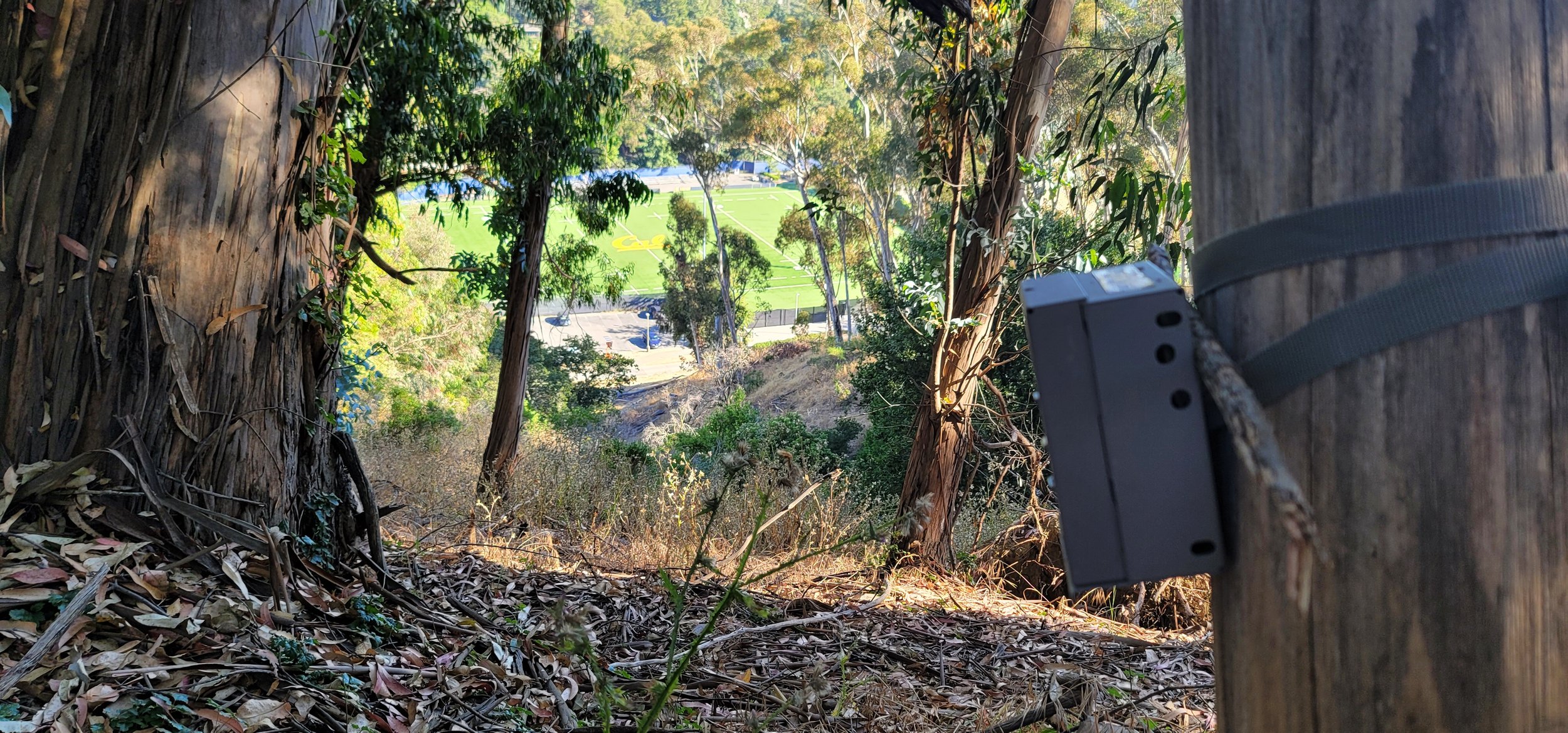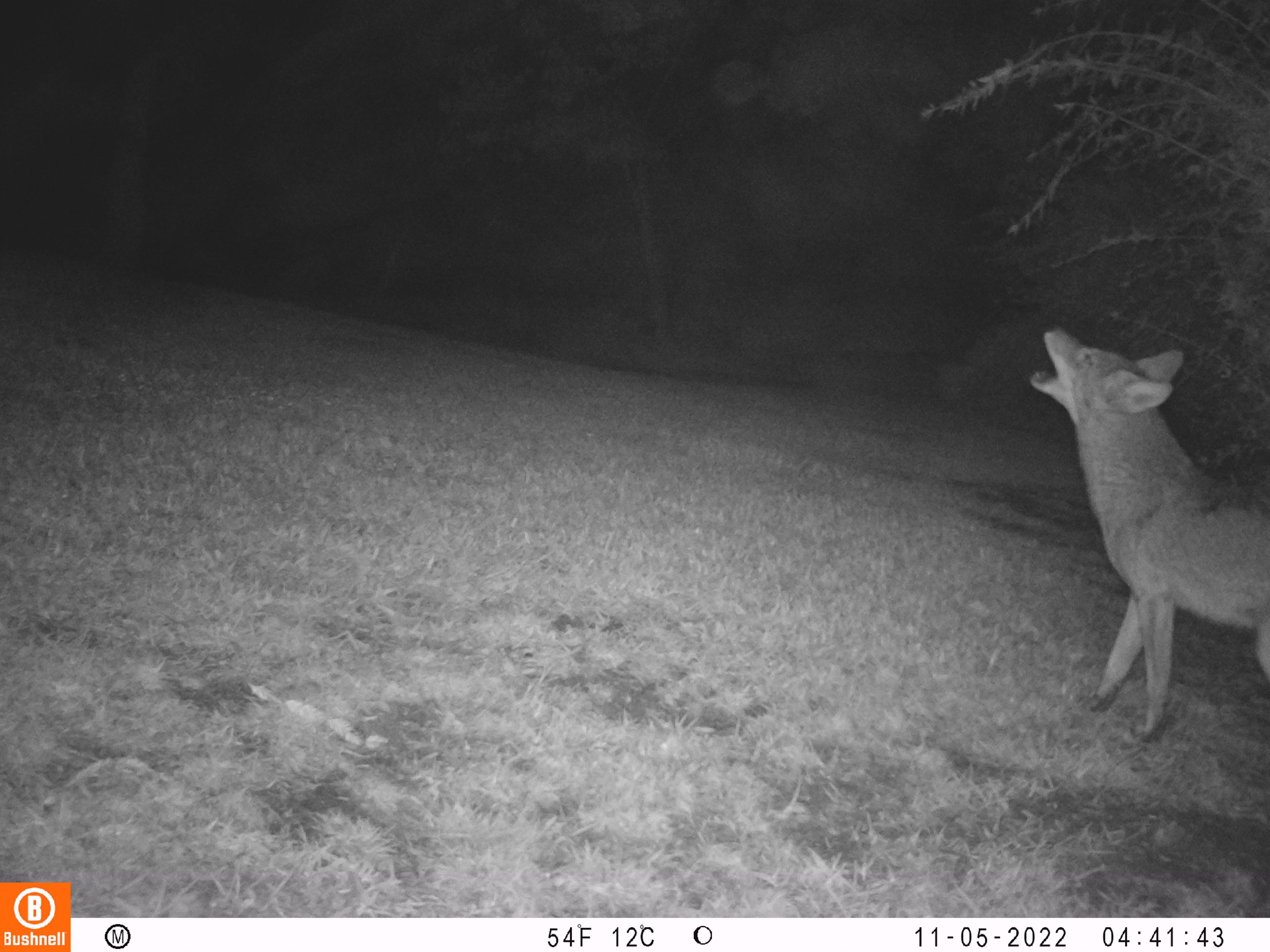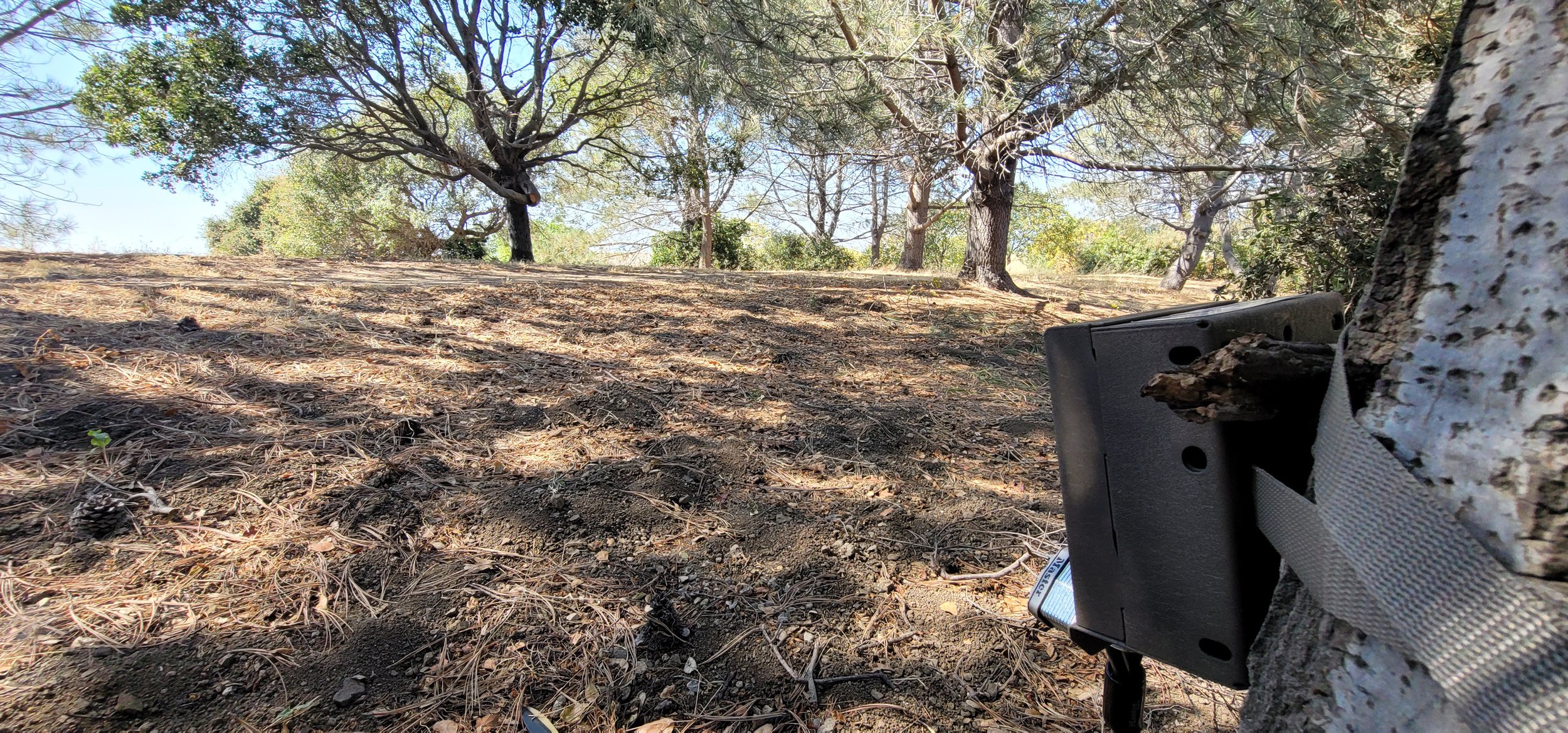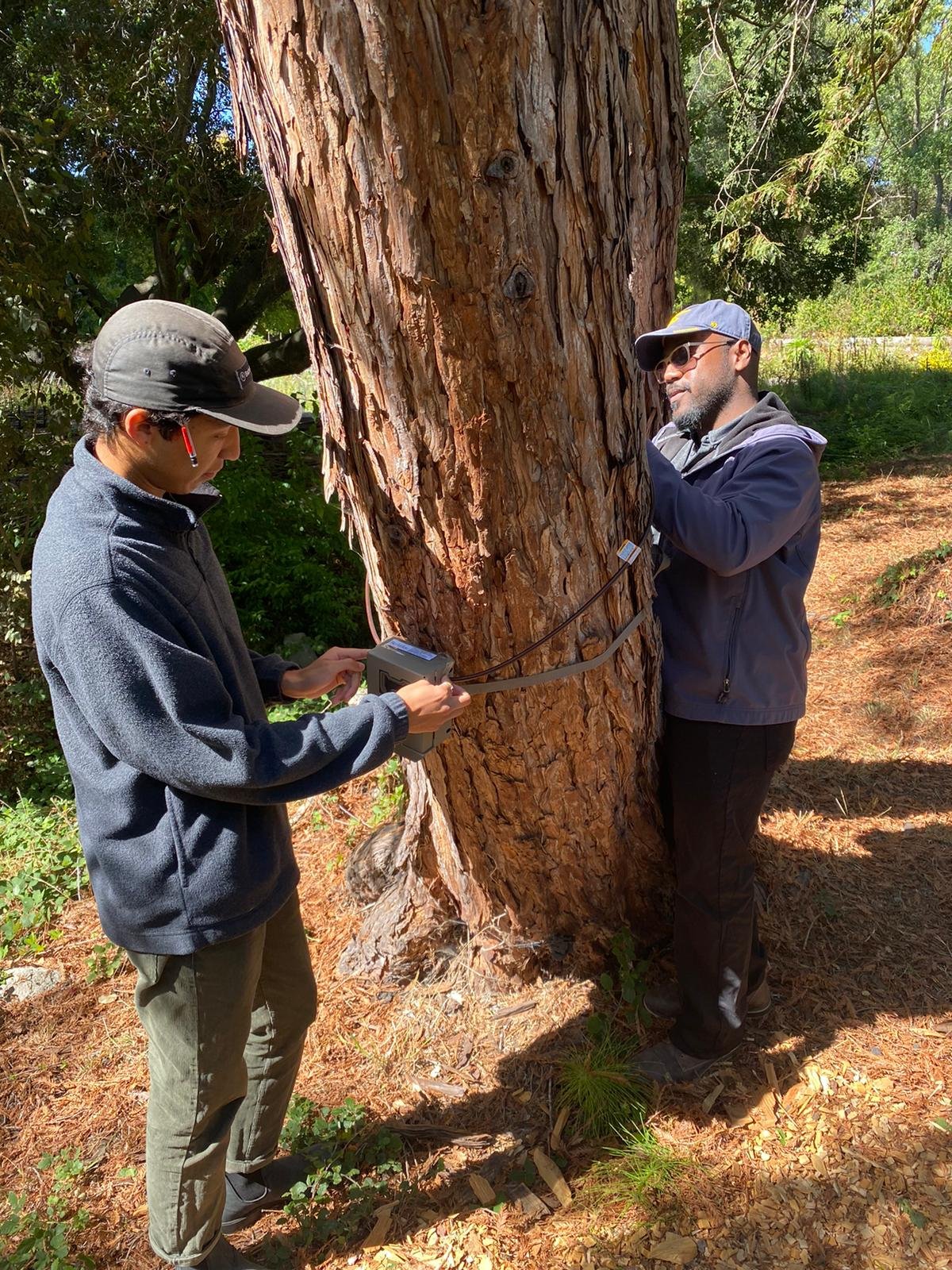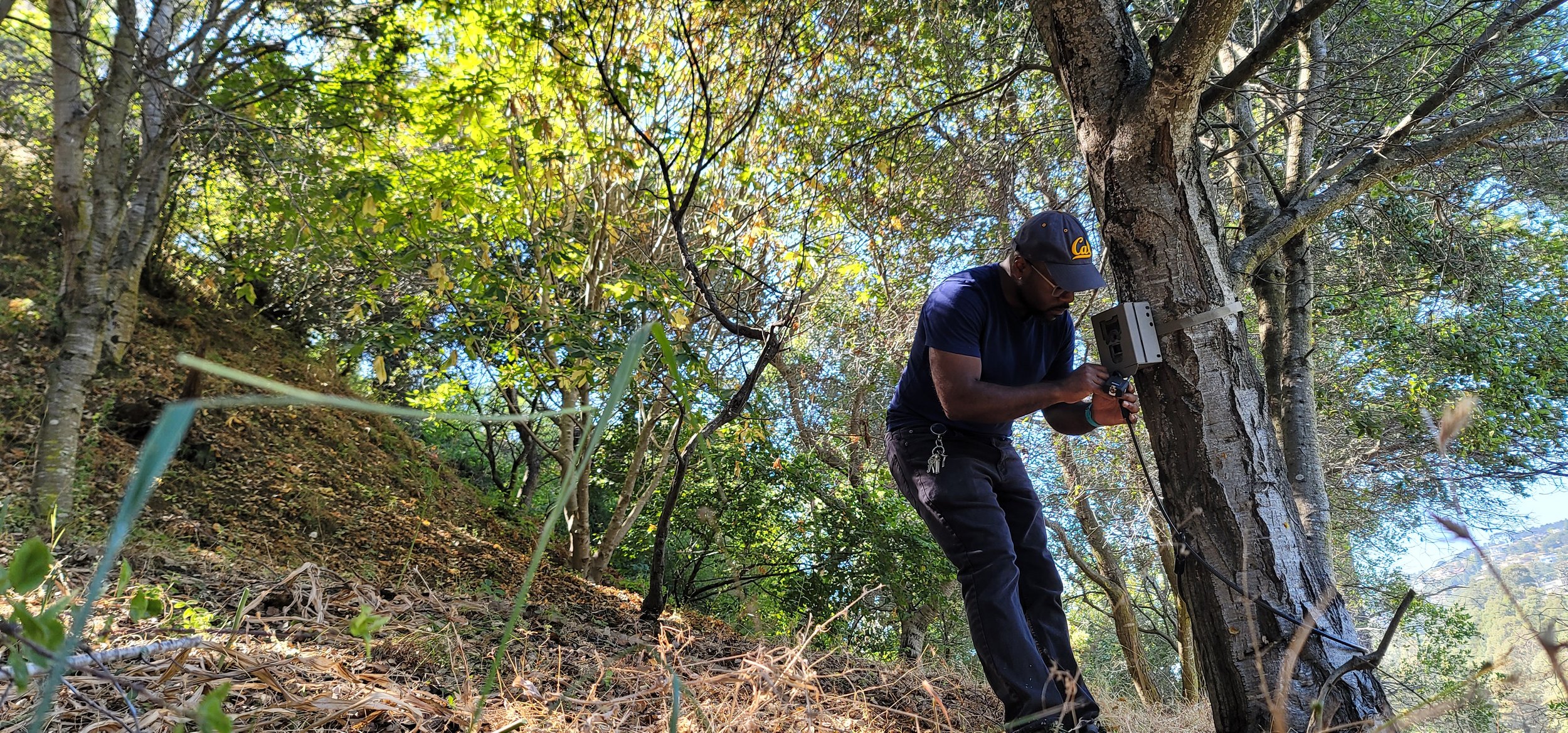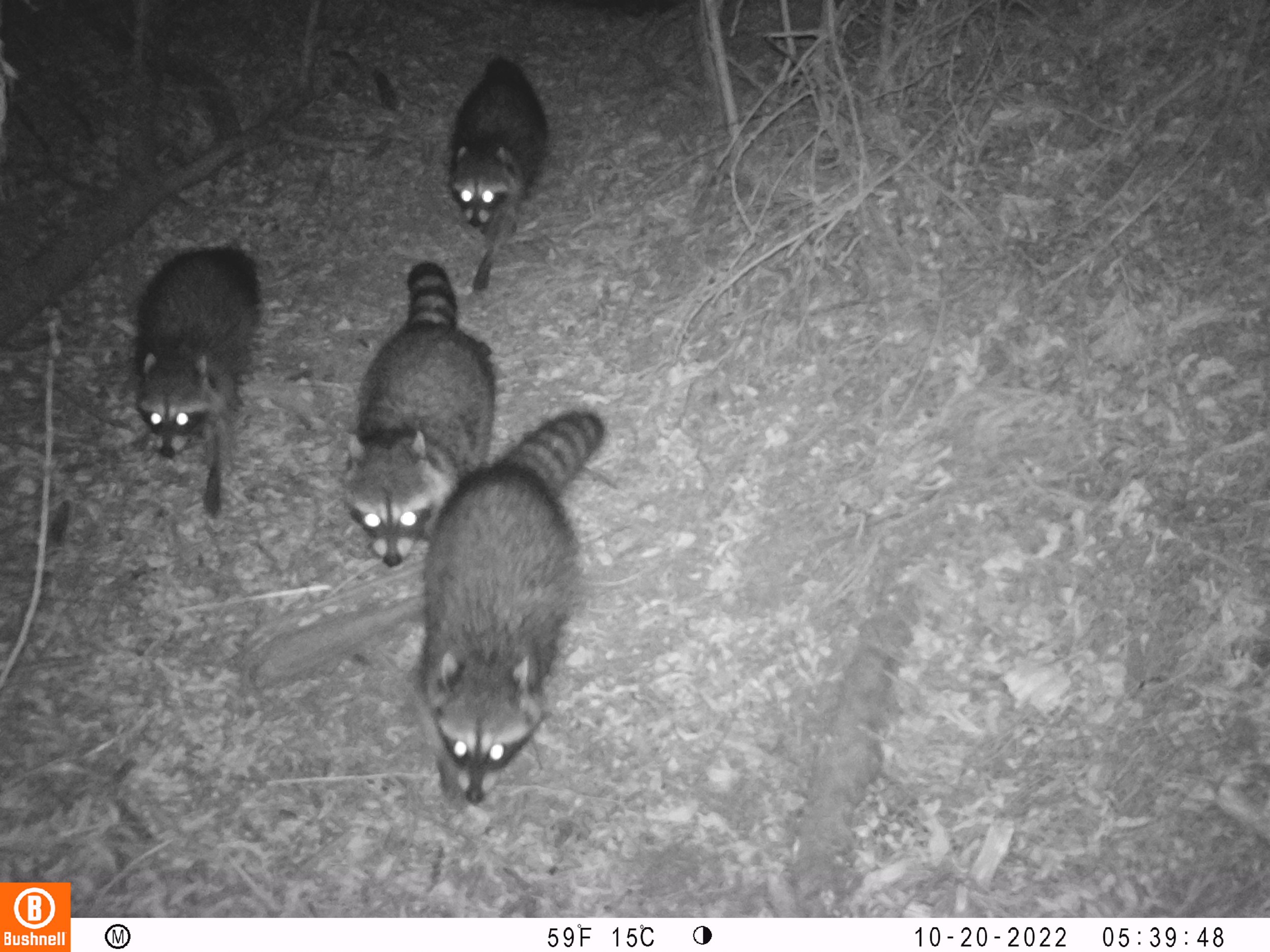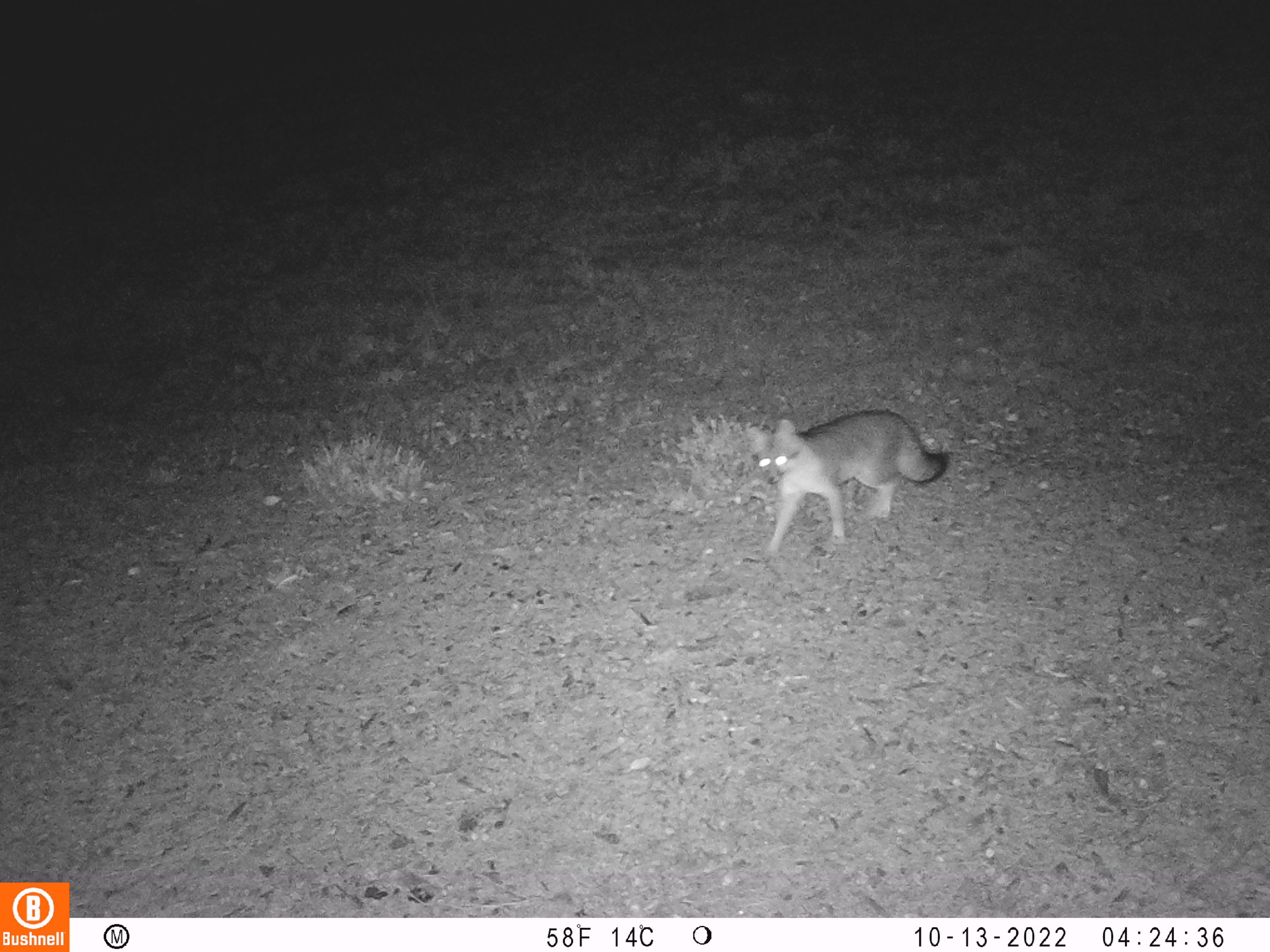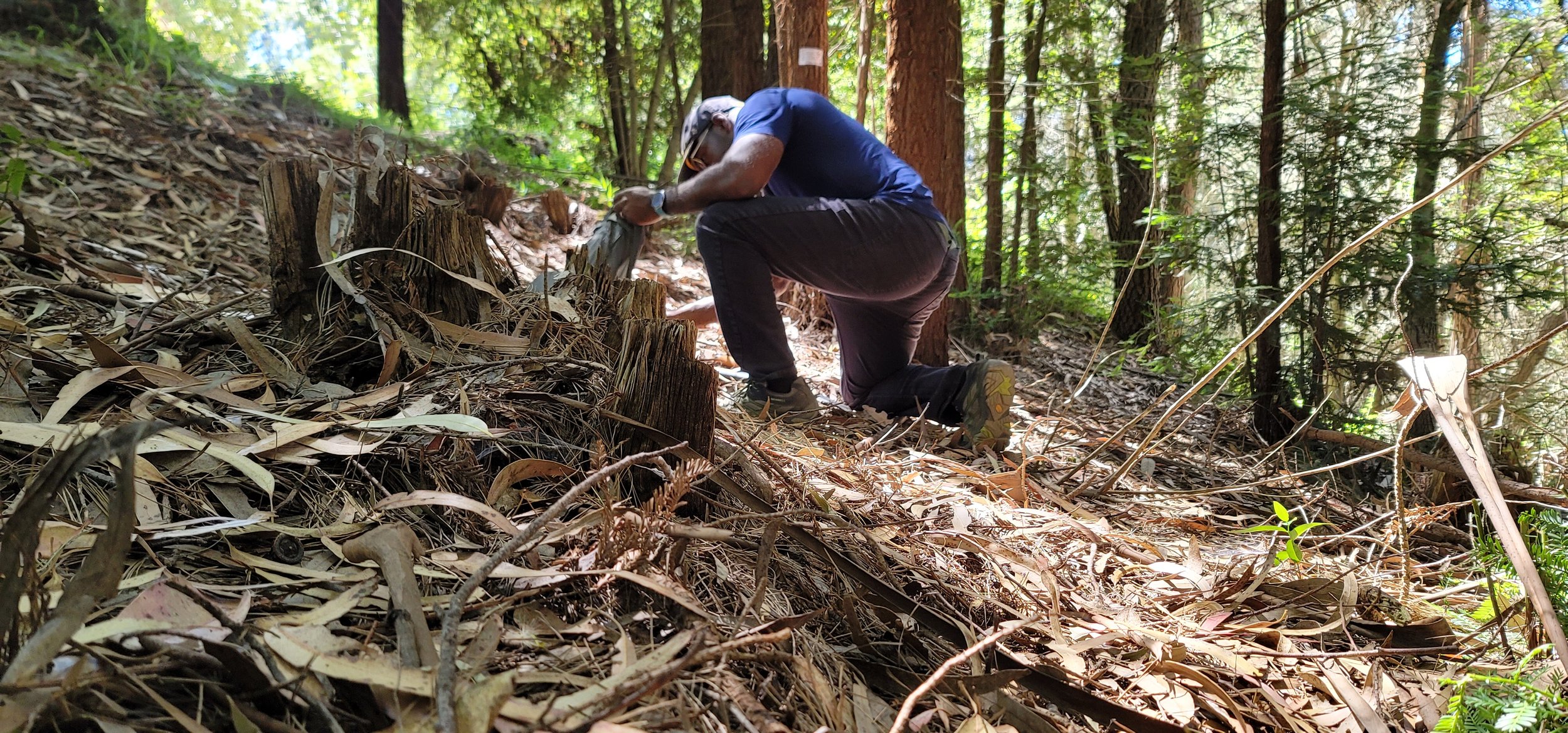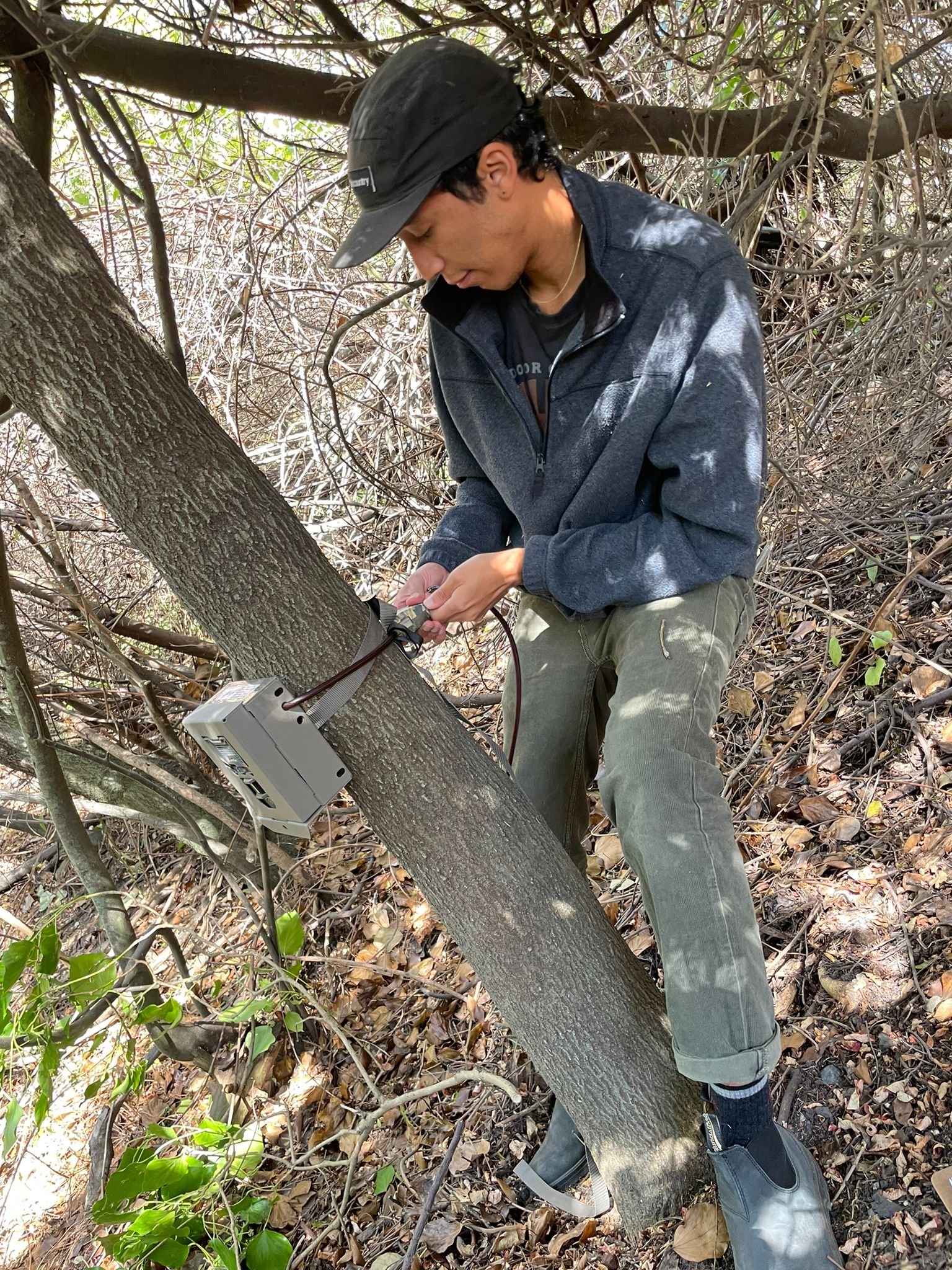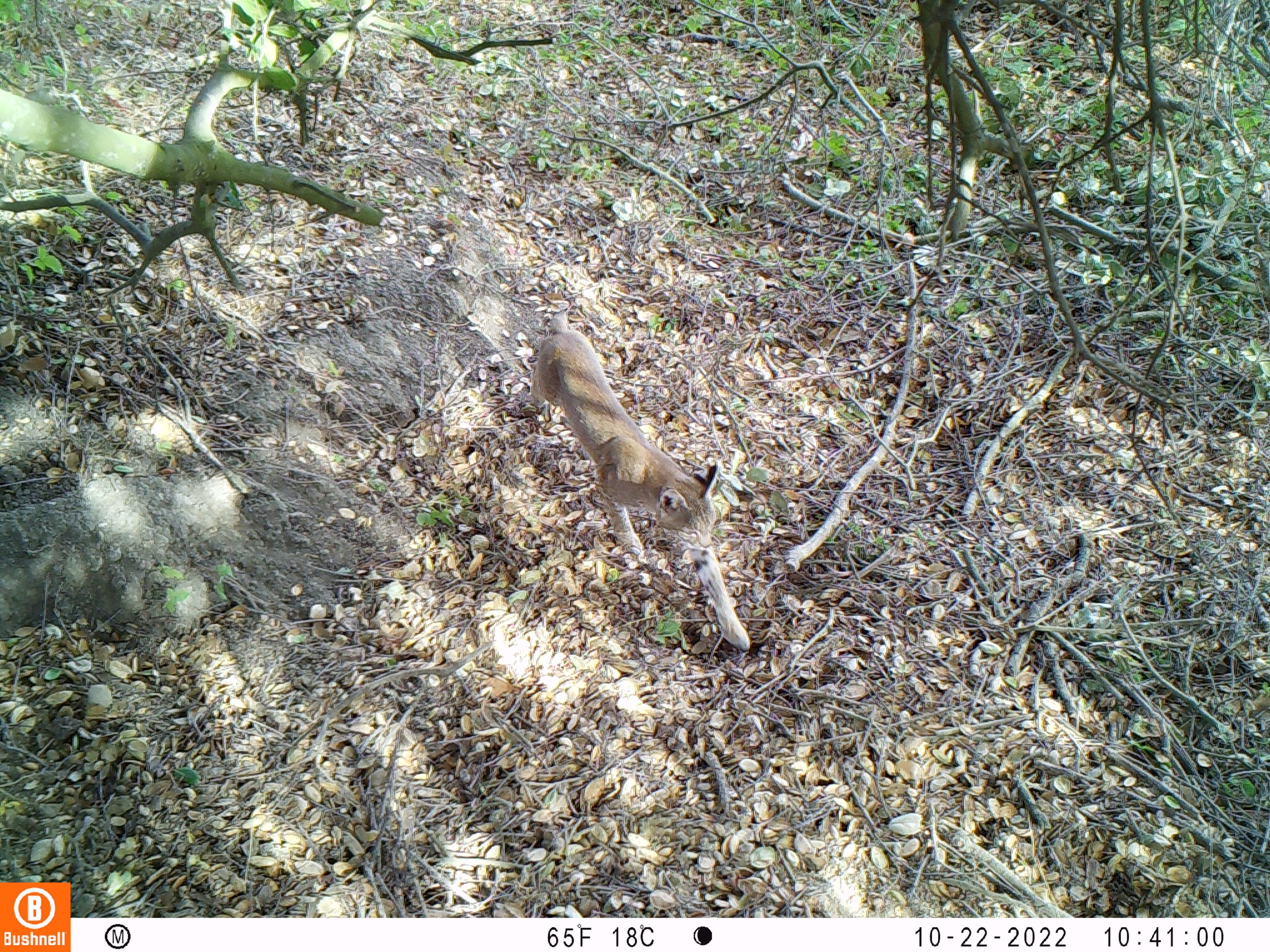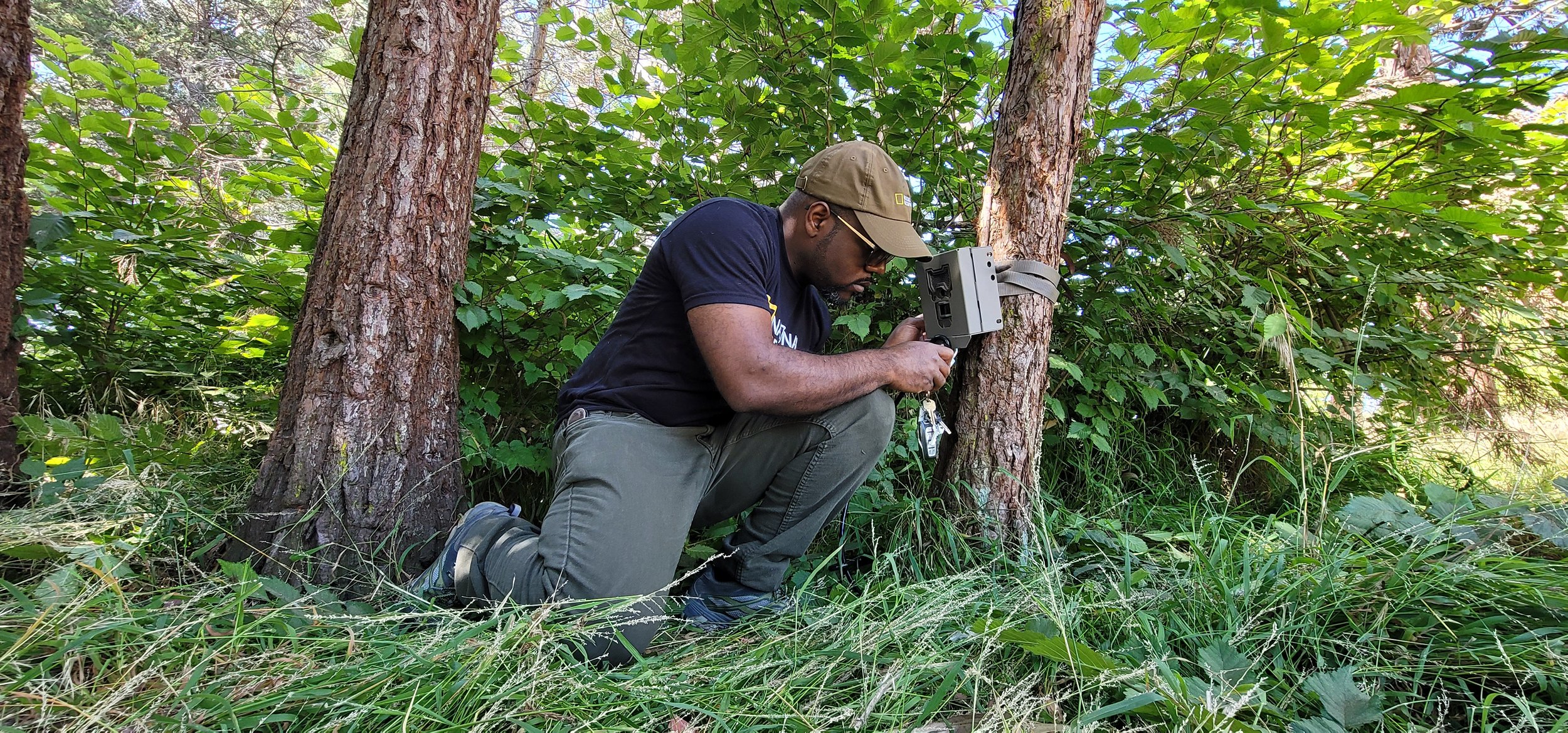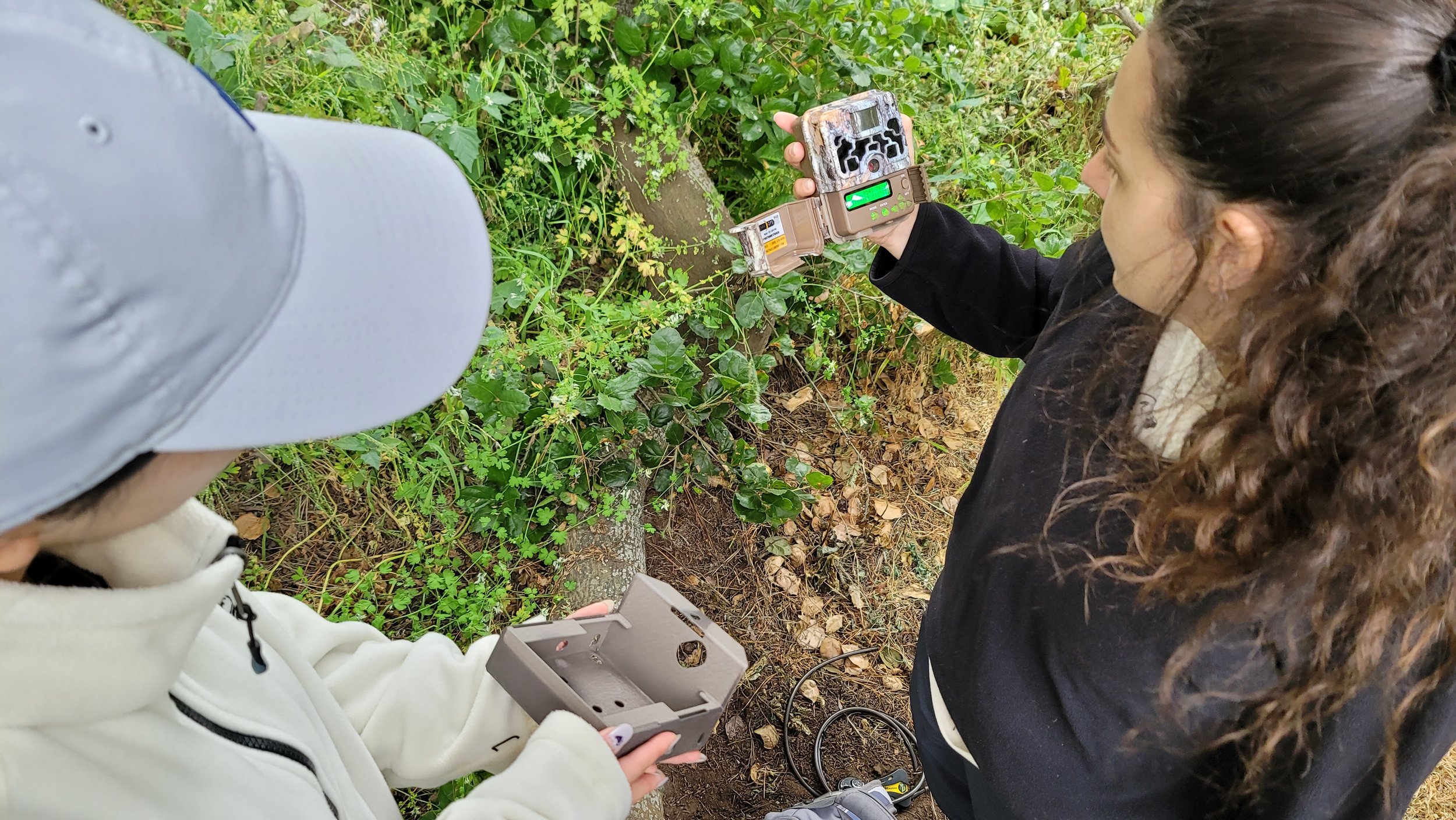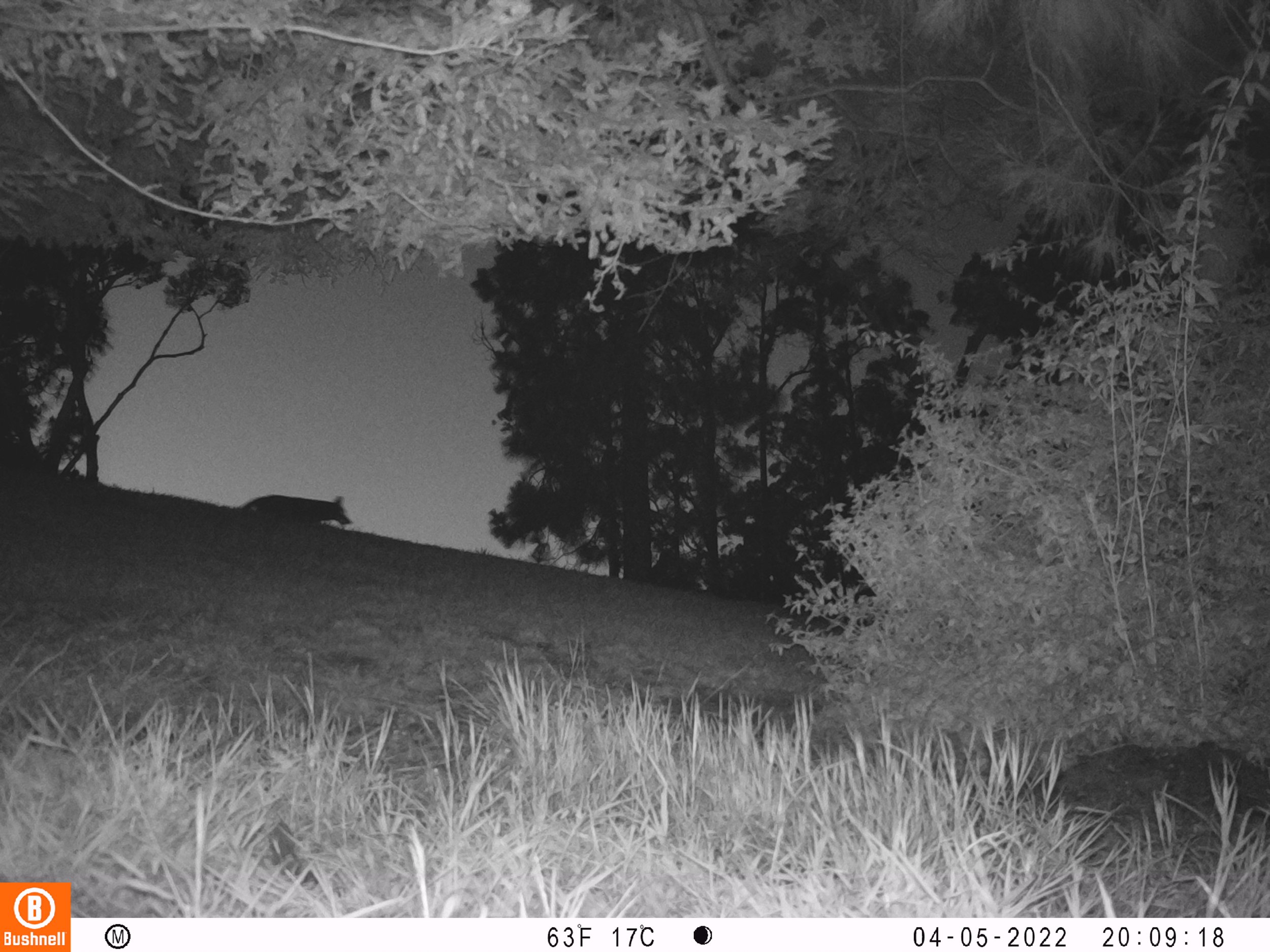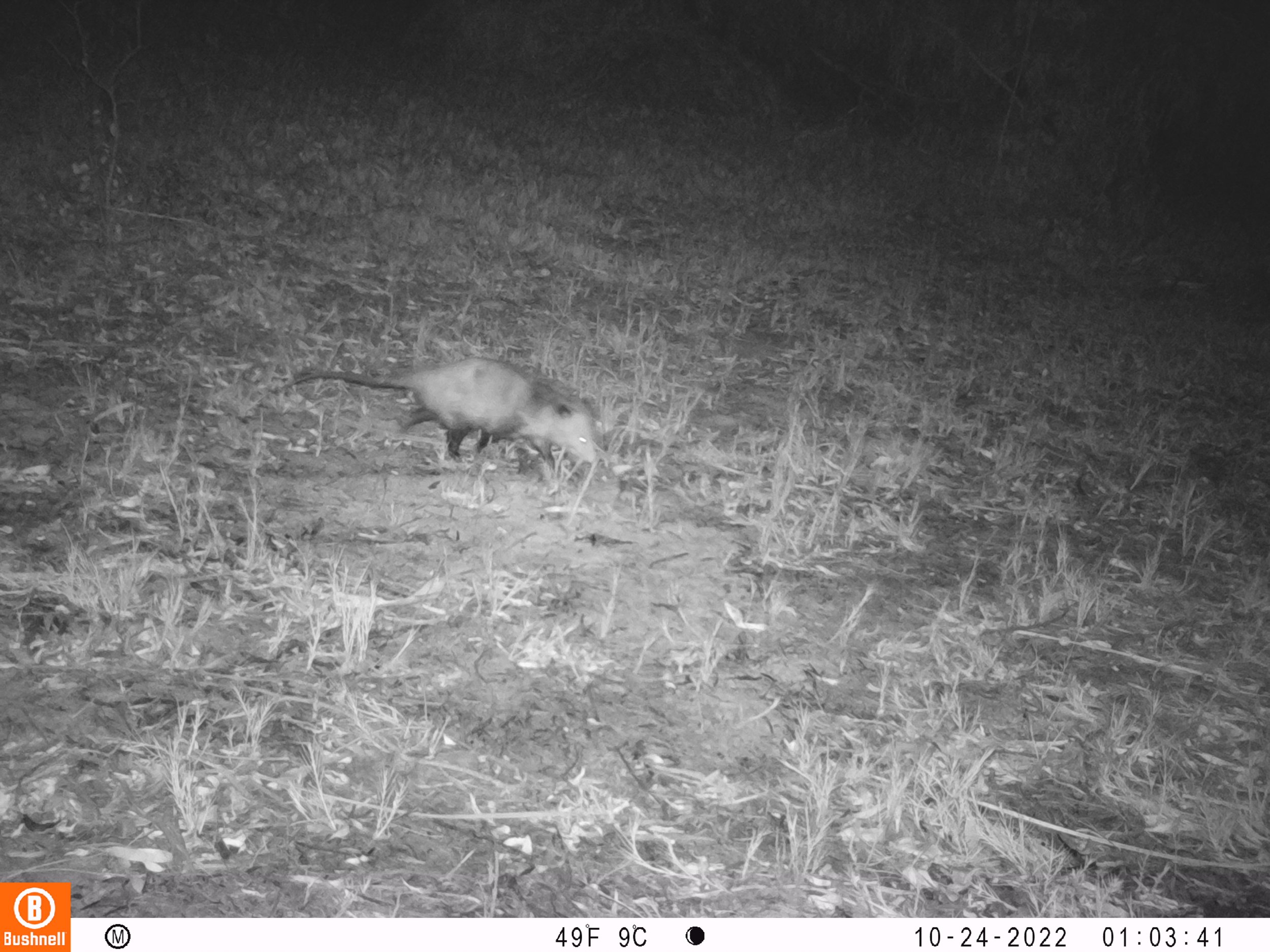Featured Project
Lights, cameras, action!
Urban carnivores can be found all across the Bay Area, but determining where the are (i.e., their spatial niche) and when the are found there (i.e., their temporal niche) is an outstanding question in urban ecology. Cameras allow us to observe urban carnivores without disturbing their normal activities. Our trail cameras are motion-activated, so they begin taking photos whenever movement is detected within their field of vision.





